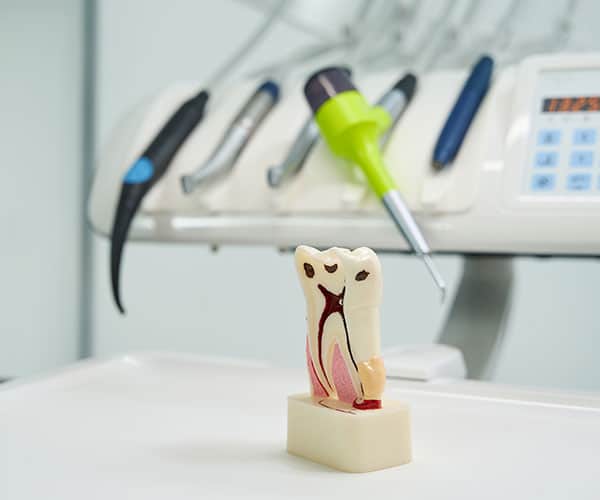Root Canal Treatment


Root Canal Treatment Mount Waverley
It’s probably fair to say that the words ‘root’ and ‘canal’ strike fear into the hearts of most of us, but knowing exactly what to expect and what is involved with this treatment can really help alleviate your worries.
At Dentist@330 our dentists in Mt Waverley have a great deal of experience in performing root canal treatments, residents of Melbourne really have nothing to fear and we are always happy to chat about the procedure beforehand.
This is the term given to the area inside a tooth where there is pulp, or a nerve – each of your teeth contains between one and four root canals. If the pulp or nerve within is infected or damaged in any way it will need to be removed and the canal cleaned and sealed to prevent further infection. Despite the nerve being removed your tooth will not be adversely affected in anyway. This procedure is known as root canal treatment.
There are a few things that lead to infected tooth pulp; if you have a seriously decayed tooth, a large cavity or a chipped or broken tooth your nerve may be exposed which in turn causes pain. You may also need root canal treatmentif you have inflamed gums due to oral decay, a previously damaged tooth that has decided to start causing problems, or if your teeth are beginning to die due to the aging process.
If your tooth pulp is infected your dentist will probably give you a course of antibiotics to take for a few days prior to having the procedure so that the infection is already being fought. At your appointment your tooth will be X-rayed and numbed in preparation. You’ll be given a shield to wear during the treatment; this isolates the tooth, keeps it saliva free and protects the rest of your mouth from the disinfectants used to clean the canal.
Your dentist will drill a small hole in your tooth so that the root canal is accessible. He or she will remove the nerve using a hand held file or a rotary instrument. Once the infected nerve has been eliminated the canal will be cleaned, dried and filled with a rubber material to seal it.
To help prevent further issues your dentist will then remove any parts of your tooth that are decayed, sealing the cavities with a temporary filling. Shortly after this you will need to return to your dentist so they can either replace the temporary filling with a permanent one or fit a crown over the broken tooth. Crowns are recommended because teeth that have had their nerve removed can become brittle and prone to breaking. A crown will help protect your smile for longer.



